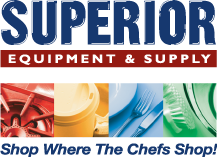
The manner in which we are ‘eating out’ is rapidly changing, especially as more millennials enter the workforce. While dining-in occurs on average 2-3 time a week, 74% of millennials report a preference for delivery service from traditional restaurants, according to NRA. With this evolution in dining, restaurants should consider adding a delivery option for their menu. We have assembled the pros and cons to contemplate before setting up a successful delivery service for your establishment.
Pros
New Revenue Stream: A delivery service allows you to increase revenue despite having a limited number of seats in your dining room. You can capture more orders on a busy Friday night. A well-executed to-go service is a smart alternative that will generate new income and patrons.
Wider Market: With a delivery service, you’ll need to market the convenience and advantages that it offers. Effective promotion of your menu and services includes a robust online presence. Internet-based marketing gives your business far-reaching exposure and puts you in front of a whole new group of diners.
Overcoming Weather Woes: A delivery service can keep business steady when the elements outside are bad. When it’s raining, snowing or frigid cold, restaurants often see a dip in the number of guests and in sales. Providing an option for patrons to dine in the comfort of their own homes can help you gain revenue that would otherwise be lost to Mother Nature.
Benefits of Digital: An online ordering option helps to increase accuracy as well as provides a valuable database of customer information. Users of the online system can specify whether they are allergic to gluten or how they would like their meat cooked. Clarity in each order reduces meal preparation errors and costs. Best of all, you have a built-in library of customer information which can be used to send special offers and ordering incentives.
Cons
Potential Kitchen Setbacks: Handling carryout orders can slow down your in-house service. Since the same kitchen produces orders for both the delivery service and dining room, consider the potential challenges and disruption when there is an unexpected fluctuation in the number of incoming orders.
Space Wars: You’ll need to establish sufficient space to prep delivery orders and store to-go containers and utensils. For some restaurants, the required footage to operate your off-premise business may take away valuable dining room or kitchen space.
Labor Costs: When your delivery service takes off, additional staff and supervision will be needed to coordinate the delivery orders. Anticipate the human cost factors for processing orders, preparing the meals, and packaging for delivery.
Driving the Bottom Line: Consider all of the direct and indirect costs of delivering orders. Depending on volume, third party meal delivery services are worth exploring. Be sure to calculate their fees into your expense analysis which range from 10 – 30% of the bill. If not relying on a third party delivery service, you’ll need a vehicle, insurance and delivery staff.
Remember to scope out what your competition is doing. And consider starting small by offering delivery for an area in close proximity to your business and later expand the service region as you scale your program.

